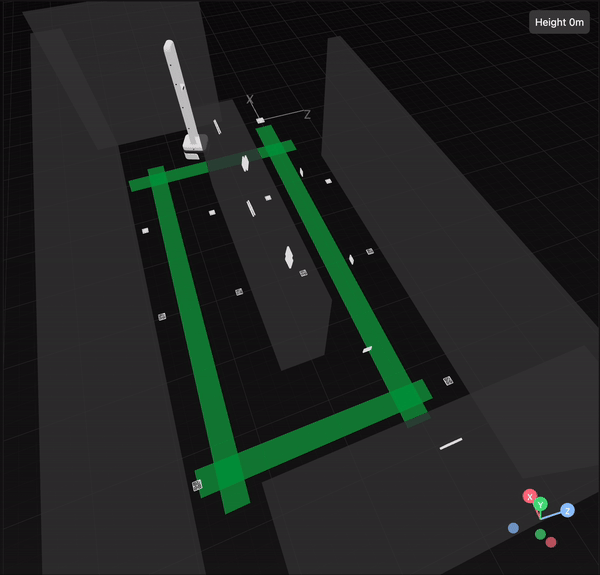Robots don’t have a shared sense of space, making it almost impossible for different robots to collaborate in the same environment. This creates issues in environments with robots from a single manufacturer, never mind a mixed fleet of robots, drones and devices from various manufacturers.
Enabling multiple robots to operate collaboratively and efficiently would transform a mixed fleet of robots, smart devices and sensors into a unified, intelligent system with collaborative and dynamic spatial awareness. This shared external sense of space is being created by one of our members Auki Labs with the Auki network, a posemesh— or shared spatial map that transforms how robots perceive and interact with the world.
Auki Labs recently shared an updated on their robotics project, outlining the challenges that robots face when inhabiting the same physical space and how the Auki Network addresses those challenges.
Collaborative Robotics
Most spatial maps today lack context, providing only geometric details without identifying objects or their functions. As a result, robots must rely on resource-intensive processes like object recognition to interpret their surroundings, slowing decision-making and limiting scalability. Auki Lab’s posemesh addresses this by overlaying environments with spatial relationships, enabling shared understanding across multiple robots.
Auki Labs recently added the Unitree G1 and Go2-W robots to their research fleet as they are ideal platforms for leveraging the Auki network. Their advanced sensors and high mobility allow them to navigate efficiently while reducing computational burdens. By using a shared spatial map, robots can collaborate seamlessly, eliminating redundant processing and improving coordination. This shift enhances efficiency and scalability in autonomous systems.
Auki Labs are committed to advancing robotics through smarter, collaborative AI. As part of this commitment they have released the Auki Robotics GitHub repository, providing tools like Robot-Compatible Map Extraction, making it easier for developers to integrate with posemesh domains. With innovations like these, they are paving the way for intelligent robot fleets that adapt to environments in real time, unlocking new possibilities for automation.

Intercognitive Pillars
The Auki network incorporates many of the pillars of Intercognitive. In particular the following three pillars are central to the collaborative spatial computing protocol.
Maps - The Auki network is built on domains, digital representations of a physical space that function as shared spatial maps.
Positioning - Visiting devices are able to get accurate locations in 3D space using not just position but pose for better performance in indoor and dense, vertical urban environments.
Sensors - Domains in the Auki network are created using sensor data such as RGB and IMU including from visiting devices.
Robotics Journey
Robotics and embodied AI agents are central to the future that Intercognitive is working towards. Decentralized machine perception networks like the Auki network will be central to making that future a reality. If you’d like to learn more about Auki Labs’ work, visit Auki Labs or watch their video series detailing their journey in robotics innovation.



